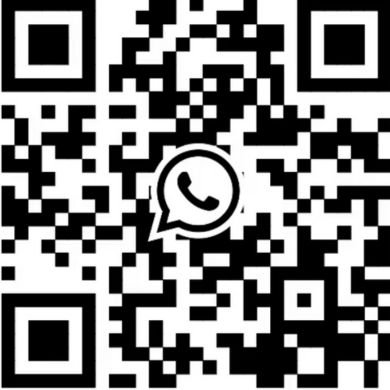Heading out on a business trip? Keeping your travel backpack organized is key to a smooth, professional journey. No more rummaging for documents, wrinkled shirts, or tech chaos—just smart packing that keeps you presentable and prepared.
Why Organized Packing Matters for Business Professionals
Well-organized packing isn’t just about space. It:
-
Keeps suits and shirts wrinkle-free
-
Let you breeze through airports and meetings
-
Saves time at hotel check-ins or hotel room setups
-
Helps you stay calm and efficient on the go
Whether it’s a one-day meeting or a week-long roadshow, an organization adds confidence to your travel.
Choosing the Right Backpack Design for Organization
Look for:
-
Panel-loading backpacks with a zipper-all-the-way-open design for easy access (like a suitcase).
-
Dedicated laptop/tablet compartment and document sleeve near the back panel.
-
Front organizational pockets for passport, pens, boarding pass, and sanitizers.
-
Internal organizers and packing cube compatibility for tidy separation.
Ideally, your bag has just enough compartments to keep things accessible without over-cluttering.
Clothing & Wardrobe Organization Strategy
To maintain a polished look:
-
Use garment folders or folding boards to keep shirts and jackets flat.
-
Build a capsule wardrobe: 2–3 shirts, 1 blazer, 1 pair of trousers, 3–4 pairs of socks/underwear.
-
Use small packing cubes to separate tops, bottoms, and casual wear.
-
Wear bulky items—like your blazer or coat—during the flight to save space and prevent bulk.
Tech and Document Organization Tips
Keep professional essentials sorted and accessible:
-
Pack power bank, USB cables, and adapters in labeled cord pouches.
-
Use a front-access document sleeve for passports, business cards, and IDs.
-
Use a hidden back or side pocket for your wallet or high-value items.
With this setup, accessing tech or credentials swiftly becomes effortless.
Toiletry & Hygiene Organization
Keeping grooming essentials neat and TSA-compliant is crucial:
-
Use a clear TSA-approved toiletry pouch for airport security ease.
-
Choose solid toiletries (like shampoo bars, deodorant sticks) to avoid spillage.
-
Separate wet items from dry using a water-resistant compartment or Dopp kit.
-
Include items like breath mints, face wipes, and deodorant wipes for freshening up before meetings.
Keep your hygiene kit compact and functional—minimalism wins in tight cabin luggage.
Wrinkle-Free Tips and Outfit Preservation
Your presentation is everything. To keep your clothes crisp:
-
Roll less, fold more—especially for formalwear.
-
Place shirts in a garment folder or use a plastic dry cleaner bag between folds to reduce friction.
-
Pack your outfit for Day 1 at the top—no rummaging needed.
-
Use compression packing cubes to prevent shifting during transit.
Pro tip: Unpack and hang your outfit immediately upon arrival at the hotel.
On-the-Go Reorganization and Daily Essentials
Even with the best packing job, in-transit needs call for flexibility:
-
Keep a small sling or pouch for items you’ll use during the flight: AirPods, sanitizer, gum, and charger.
-
Reserve one packing cube or internal mesh area for dirty clothes or switched outfits.
-
Regularly rotate outfits in your backpack to maintain balance and avoid squashing items at the bottom.
-
Keep extra space in one compartment for bringing back printed brochures, business cards, or new items.
Make organization a habit, not a chore.
Maintenance & Cleanliness on the Road
A tidy bag = a tidy mind. For upkeep:
-
Wipe down the inside of the bag with disinfectant wipes after each trip.
-
Keep silica gel packs inside your backpack to reduce moisture buildup.
-
Spot clean spills quickly using a mild soap + water solution and a microfiber cloth.
-
Store your backpack in a cool, dry place—not crammed in your closet.
FAQs: Business Travel Backpack Organization
Q1: What size backpack is best for business travel?
A: A 20–30L backpack is typically ideal for 1–3 day trips. Look for TSA-compliant carry-on sizes.
Q2: Can I carry a suit in a backpack without wrinkling it?
A: Yes, use garment folders or fold with dry-cleaner plastic bags inside to reduce wrinkles.
Q3: How do I organize tech and chargers efficiently?
A: Use dedicated cable pouches, ideally with labeled mesh sections for adapters, cords, and batteries.
Q4: What’s better: one big compartment or multiple small ones?
A: Multiple organized compartments allow easier access and better separation—ideal for business travel.
Q5: Should I carry an additional bag for meetings?
A: A slim daypack or folio inside your main backpack can double as a meeting bag.
Conclusion: Smart Packing, Smarter Travel
Organizing your business travel backpack isn’t just about saving space—it’s about stepping into every meeting confidently, knowing you have everything where it should be. With the right gear, methods, and mindset, you’ll not only look the part—you’ll travel like a pro.



